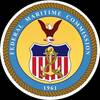Upcoming Project NEPTUNES is set to offer a best practices guide for ports on measuring, labelling and mitigating noise emissions of vessels at ports.
Up until today, there is a noticeable absence of any universal measurement protocol for the quantification of noise performance of ships in port. Nor is there any recorded information or standardised data regarding noise or nuisance in and around ports.
The information that is available varies enormously and is rarely translated into concrete measures to mitigate that noise.
Frank Wolkenfelt, one of Project NEPTUNES' key program participants takes up the story: "The aim is to really place vessel noise on the table as another emission. Ports in the world today are becoming increasingly residential, with waterfront properties alongside new cruise homeports. Container, bulk and liquid terminals are handling ever larger volumes of cargo in terms of loading, discharge and transhipments from ever larger vessels."
"Ships alongside need a constant energy source to keep running and there is a entire chain of shore-based noise-generating machinery and equipment that serves them that are almost singularly focussed on greenhouse gas and carbon emissions reductions. And that is before any reference is made in terms of impact of noise on natural ecosystems," Frank added.
The development of the measurement protocol has been based on international standards and the experience of acoustic specialists with similar projects in other industries.
The protocol was then tested in seven ports (23 ships in total using a two-day audit plus report follow up for each, completed by the end of 2018 ) to guarantee the satisfactory and objective quality of the results and to prove that the protocol was suitable for the given purpose.
Guidelines for consistent labelling were then developed in the participating ports based on measurement results. The aim is to classify the emitted noise from different types of ships based on their overall sound power level and the proportion of low frequency noise.
By creating a practical 1-100 scale based on scientific measurement with a high score designating a low noise vessel by type, the path is now open to integrate the label into the IAPH Environmental Shipping Index (ESI).
The ESI has over 7,000 ships on its register and has been adopted by some of the world's largest ports to reward and incentivise shipowners with vessels that meet and exceed IMO emissions standards.



